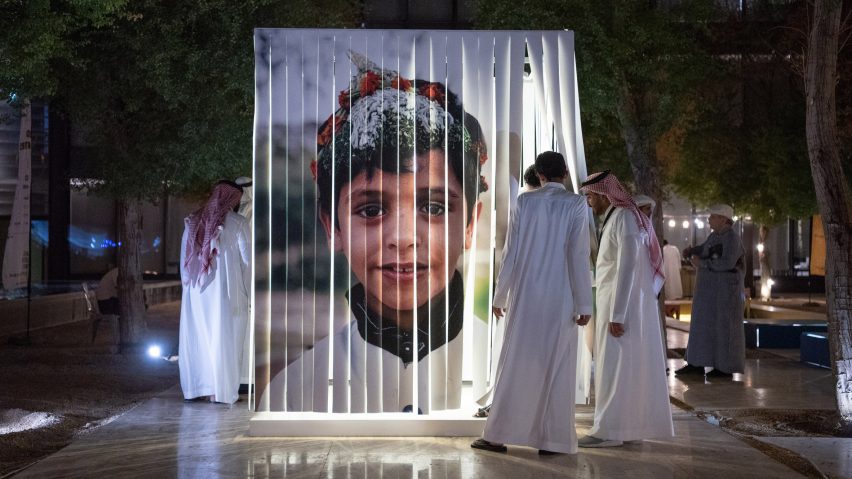
"Things aren't what they seem" at Saudi Design Week says first overseas journalist to visit
Dezeen's Gunseli Yalcinkaya became the first overseas design journalist to attend Saudi Design Week in Riyadh earlier this month – a visit that coincided with the murder of dissident Saudi journalist Jamal Khashoggi. With world attention focused on the Saudi regime, she writes about her experience of visiting the desert kingdom.
The walls of Saudi Arabia's brand new Ministry of Culture are covered in intricate patterns, Islamic geometric motifs that, from afar, appear to be crafted from metal. On closer inspection, you notice a facade pasted onto the outer surface. Go inside and you enter a series of dingy offices. Things aren't what they seem.
Until five months ago, the Ministry of Culture did not exist, yet it is already lauded among locals as one of the leading sources of support for the creative industries, or that is the impression I received when attending Saudi Design Week as, according to the organisers, the first international design reporter to enter the kingdom.
Saudi Design Week founded five years ago
In its fifth year, the five-day event is still in its infancy. It is held at the King Abdul Aziz Centre for National Dialogue in the country's capital Riyadh, a monolithic conference centre on a busy road, surrounded by a busier car park lined with Uber taxis. The centre is named after the grandfather of the crown prince Mohammed bin Salman, who is allegedly involved in the disappearance and brutal murder of Jamal Khashoggi.
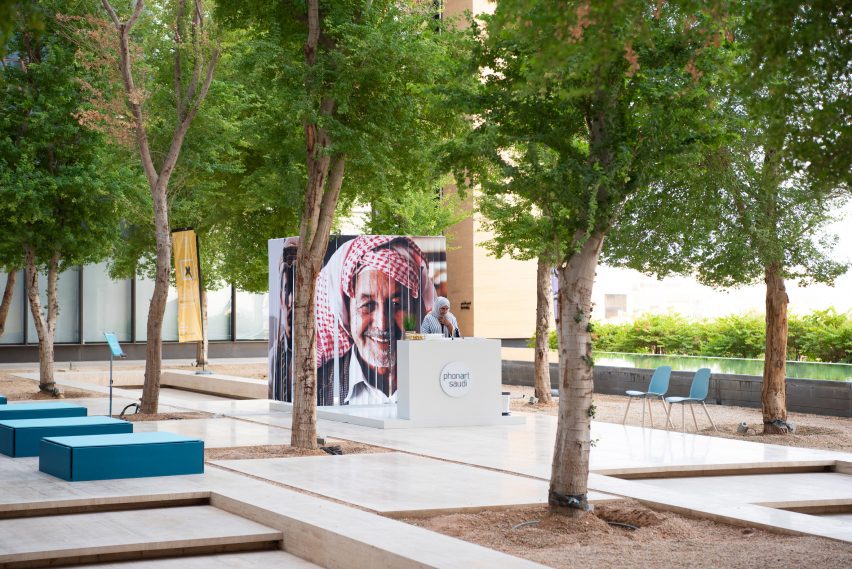
Headed by designers and sisters Basma and Noura Bouzo, the festival aims to draw attention to a diverse range of designers from across the region through a series of exhibitions, showcases and workshops, where we were offered an endless supply of dates rather than beers.
There were a few conceptual projects on show, ranging from a sustainable prayer mat, made from half the material of its standard counterpart, to a chair with a looping metal structure meant to resemble the designer's jumbled thoughts. But most of the products erred on the side of commercialism: "It feels like a trade show," said one of the exhibitors.
Walking around the site, I saw some women wearing full burqas, while others were dressed in abayas (traditional, loose-fitting garments), their hair dyed and styled in ways that would be considered alternative by western standards. Meanwhile, the men wore clothes ranging from the traditional thobe (an ankle-length robe) to a simple T-shirt and jeans combination.
Workshops and seminars to build industry from the ground up
According to the organisers, the design scene is building itself from the bottom up, trying to develop into an industry while remaining independent from its governmental benefactors.
"You want it to grow fast but not be hand-fed," said Noura Bouzo. One aspect of this is giving young people the chance to develop the skills needed to create products. "We want to make a platform that compares to design across the world," she began. "There is massive talent but it needs to be honed, refined and given the opportunity."
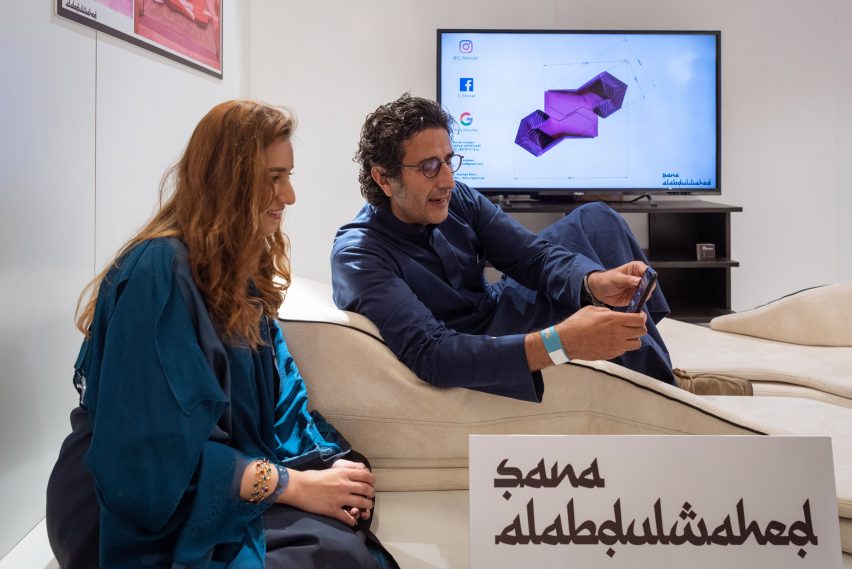
Workshops, which are held daily during the event in an attempt to encourage young people to engage with the industry, have doubled in participants since last year from 300 to 600. Here, visitors are given the opportunity to work in seminar-sized classes with international designers, ranging from London-based designer and printmaker Morag Myerscough to established local architect Sami Angawi, director of the Amar Center for Architectural Heritage and a former fellow at Harvard University.
On Sunday, schools and universities in the area are invited to the design week free-of-charge. "Last year, the head of Zaha Hadid Architects, Patrik Schumacher, came with his entire team of directors from both the London and Middle East offices to do portfolio reviews the entire day," said Noura Bouzo.
Saudi moves to post-oil economy with flagship architectural projects
The event took place within the context of crown prince Mohammed bin Salman's 2030 plan (that began in 2016) to reduce Saudi's reliance on oil – an industry that made the nation $161 billion (approximately £124 billion) in revenue this year.
Proposals are underway to move the nation forward into a post-oil economy. The scheme aims to diversify its public sectors into "five pillars": infrastructure, education, tourism, culture and health. In the words of one government representative: "The ministry will be the main sponsor for all the advancement of culture in various fields, enhancing the Saudi and urban identities".
The kingdom has commissioned many headline western architects to signal its intentions in material form, including Zaha Hadid Architects, which built the Urban Heritage Administration Centre in Diriyah and the King Abdullah Petroleum Studies and Research Centre in Riyadh. Construction is also underway to build the world's tallest tower in Jeddah – a project overseen by architecture firm Adrian Smith + Gordon Gill Architecture.
With a population of approximately 33 million, the country's GDP is projected to increase by 30 per cent by 2023. And given that two years ago it was forbidden for a man and woman to be in the same room together alone, the country seems to be making significant progress. There didn't seem to be any awkwardness in my conversations with mixed groups during the week. We all shook hands quite happily.
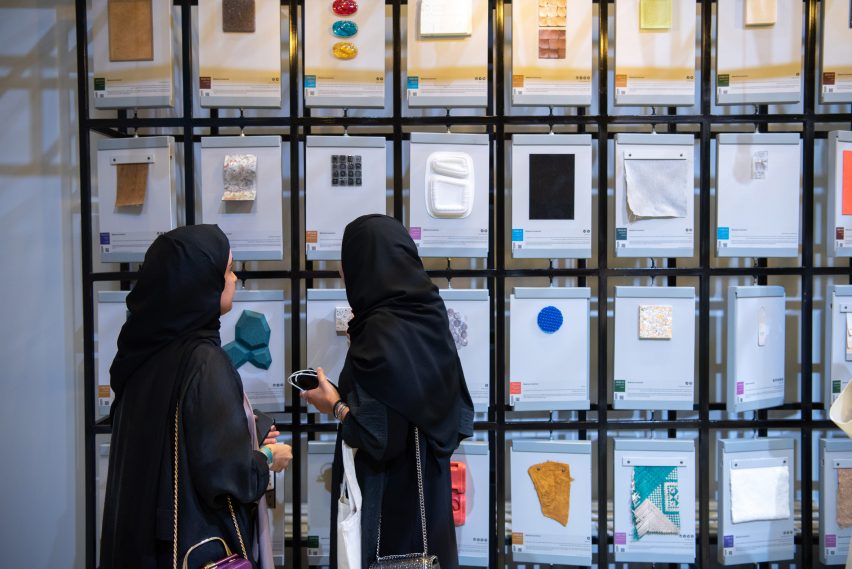
In April, Riyadh opened its first cinema to the public in 35 years, while online visas have finally been introduced in a bid to increase tourism – an announcement that came as a relief, given the days of chaos faced acquiring my own visa with a private company.
The 2017 decree that lifted the ban on women obtaining driving licenses – a law that had been used by critics as proof that female citizens of Saudi Arabia were repressed – saw men and women take to social media in celebration. The move was most significantly commemorated by fashion designer Mohammed Khoja, whose commemorative bomber jacket graced the cover of Vogue Arabia.
Reforms undermined by death of Jamal Khashoggi
But recent events have shone a harsh light on the leader's promises of reform. Khashoggi's murder at the country's consulate in Istanbul – an event that coincided with my visit – has put the kingdom's regime under the scrutiny of the world, with some international media outlets connecting Bin Salman to the killing.
The nascent international collaboration in the creative industries that I represented as a visitor to the design week seems to be faltering. British architect Norman Foster has temporarily stepped back from a project overseeing the planning of a $500 billion mega-city in the country.
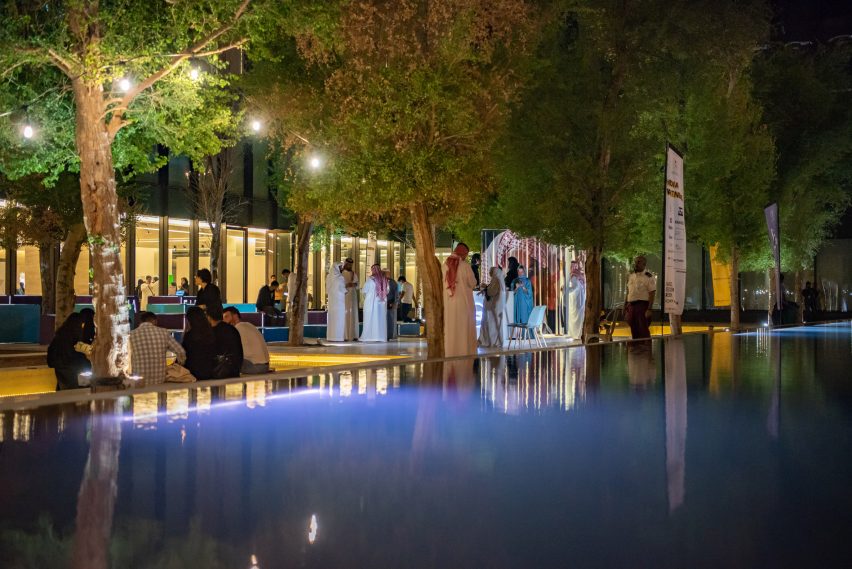
A number of high-profile business and political leaders have pulled out of attending the Future Investment Initiative, an economic forum taking place in the capital this week, including MasterCard CEO Ajay Banga and J.P. Morgan CEO Jamie Dimon, as well as media sponsors like The New York Times and CNN. The boycott appears to work in both directions. The kingdom has scrapped a planned deal with Virgin Hyperloop following Virgin founder Richard Branson's criticisms of the regime.
Yet my first impression of the country is positive, despite being warned by loved ones to be careful in the weeks leading up to my departure – the country has one of the highest rates of imprisonment of female activists and journalists in the world.
As a woman, I was aware of the country's strictly demarcated gender roles that limit the place of women in public life, but I soon felt comfortable. The lack of heckling was a welcome change. But as a guest of the design week – which was founded after all by two women – staying in an international hotel and ferried between events, I'm aware that my experience of the country was both short and particular.
Riyadh is built for cars, not pedestrians
Compared to other design weeks, which are usually held in sites across their respective cities, Saudi Design Week's single venue made the event feel insular, even if, on a practical level, it makes sense. Leaving the King Abdul Aziz Centre for National Dialogue, I am immediately surprised by the capital's lack of public infrastructure: the city is a casualty of its climate.
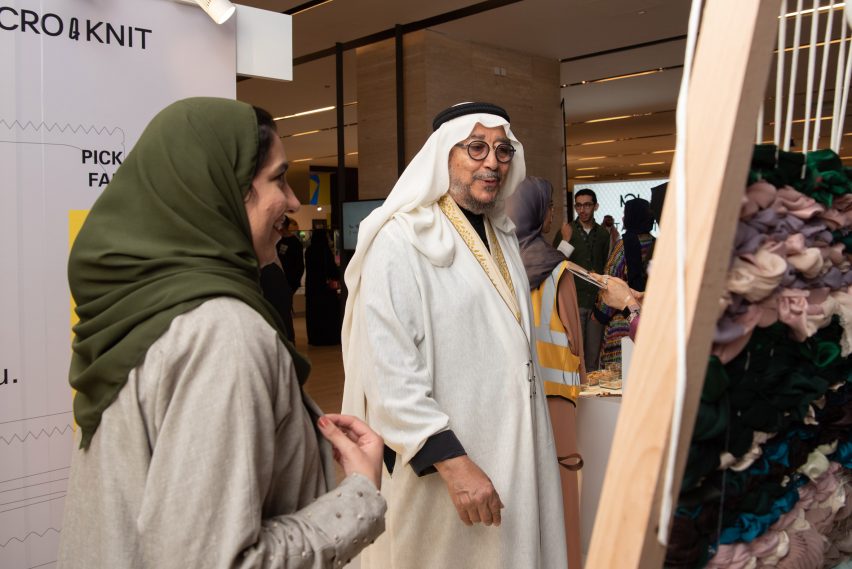
Scorching temperatures of 40 degrees Celsius are common in October, which I'm told is regarded as "off-season". Subsequently, there are hardly any pavements and even fewer public squares or parks. Daily life is spent between air-conditioned buildings and cars. The result is strictly impersonal.
"We have given the car too much priority," said Angawi. First introduced 50 years ago, the tarmac roads that connect Riyadh follow a grid-system – a "mistake" that, according to Angawi, boils down to Saudi trying to imitate western infrastructure.
"Riyadh was built for the car and we are copying the mistakes of the past because it is all we know," he explains. "It is not natural to sit in a refrigerator. We sleep in a refrigerator, we eat in a refrigerator, we move in a refrigerator and now we become frozen meat."
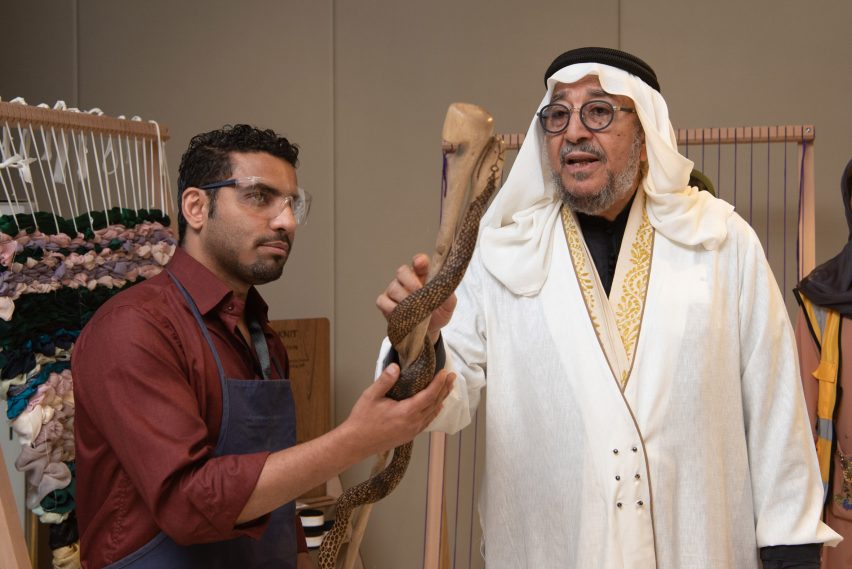
While a six-line metro transport system is due to open next year, the lack of public infrastructure means that social interactions are limited. "The people want public spaces but the way it's planned it is not there so they grow used to it," explains Angawi. The plan is a step in the right direction to opening-up the city, but in light of recent events, any progressive murmurs are overshadowed by the death of Khashoggi.
Nevertheless, architects like Snøhetta co-founder Kjetil Trædal Thorsen, who worked on the King Abdulaziz Centre for Knowledge and Culture in Dhahran, have spoken openly on how architects need to work in non-democratic countries to help improve conditions for the people that live there.
"We have to work in the world that is not the free world," he told Dezeen in 2016, following a talk at the Danish Pavilion during the Venice Architecture Biennale. "Working in the free world is easy, but working in the non-free world is really hard and we can make a bigger difference."